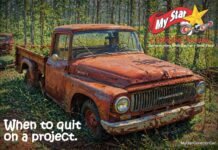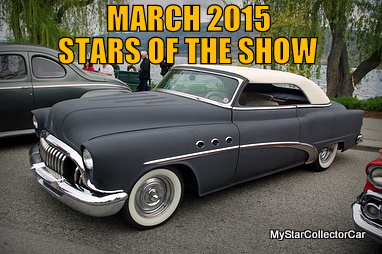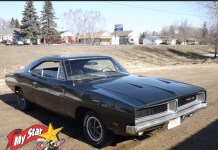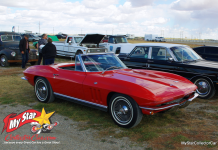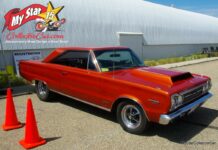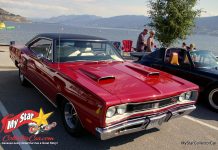The succession plan is always in play with car guys, because an old car has so much more character than a new Subaru.
A succession plan is a great idea because without it, a family legacy could end up sold—or even worse– crushed.
Jerry Sutherland

This 1930 Plymouth had an uncertain future because its last owner ran into health issues, so he put it in a shed. Brian and Jill Clayholt came to the rescue of the old classic because the last owner was Jill’s father. Brian told him, “Don’t sell it—we’ll put it back together”.
The car was originally dragged out a pasture and it had “trees growing through it”, so this old Plymouth was a few years away from disaster when it was rescued.

That was in 2010. Brian’s vision for the Plymouth was to make it a drivable street rod—he had one condition. This had to be an all-Mopar build. He started by enlisting the services of a veteran street rod guy as a mentor.

Brian would have been happy with a 318 under the hood, but his mentor aimed him in a different direction. He’s a more-power guy so he advised Brian to plunk a ’71 Duster 340 under the hood–but not before stroking it into a 426 small block. Brian was clear—this Plymouth would not be another Chevy small block street rod.

The 1930 Plymouth had a significant amount of wood in its upper frame and roof, so Brian wanted to address that because his street rod needed more upper body strength. There was a massive amount of welding to make this Plymouth an all-steel car and chop it at the same time.

Brian pointed out where he replaced the open roof with metal because he wanted to showcase the modifications. The whole project required generous use of an English wheel. Brian was happy to report there was “hardly a speck of rust on it.”
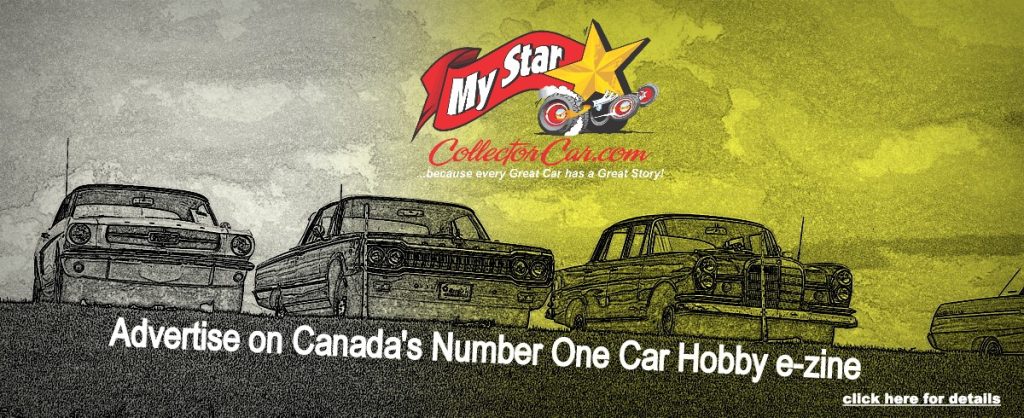
The back end of the car was another feat of engineering because Brian needed room to fit a custom gas tank in the trunk area. He solved that by custom building a rear valence to accommodate the tank and narrow the trunk for the extra room. It was a big job—Brian was happy his street rod mentor coached him through the process because he said he needed “every bit of storage I could get in every nook and cranny”.

Brian did a lot of parts shopping the old-fashioned way—at a wrecking yard. He did most of his scavenging in the Mopar section so the 3:91 rear axle was rescued from a 1966 Barracuda. The overdrive automatic came from a ’90 Dakota. Brian really mapped the installation out because he can yank the transmission out in about 15 minutes.

Brian also fabbed up the custom rear fenders to accommodate the fat tires at the back. There were numerous other fabrication jobs done on the Plymouth, so Brian worked on it every winter for four years because he had some spare time from his farming operation.

This air-conditioned Plymouth street rod is as comfortable as a street rod can get, so Brian and Jill hit the road whenever the farm allows them to because it’s that much fun to drive. He admits he has hundreds of hours invested in it, but it was worth every hour to rescue this project.

They’ve put 3000 miles on the Plymouth because Brian built a street rod—not a trailer queen.
Jerry Sutherland
By: Jerry Sutherland
Jerry Sutherland is a veteran automotive writer with a primary focus on the collector car hobby. His work has been published in many outlets and publications, including the National Post, Calgary Herald, Edmonton Journal, Ottawa Citizen, Montreal Gazette, Saskatoon StarPhoenix, Regina Leader-Post, Vancouver Sun and The Truth About Cars. He is also a regular contributor to Auto Roundup Publications.
- CLICK HERE TO SIGN UP FOR THE NEWSLETTER
- CLICK HERE to Like us on Facebook
- CLICK HERE to Follow us on Twitter
- CLICK HERE to Follow us on Pinterest
Please re-post this if you like this article.






